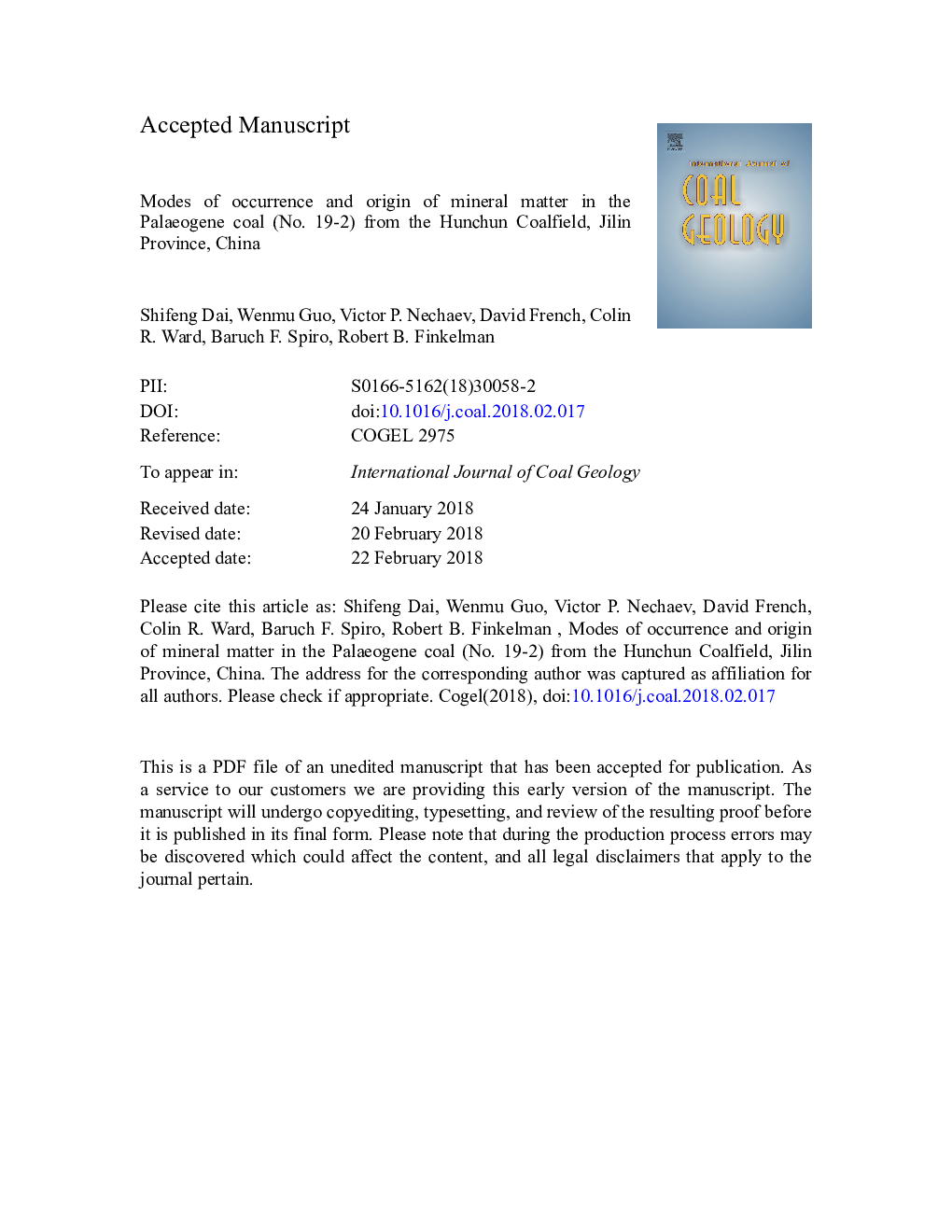| Article ID | Journal | Published Year | Pages | File Type |
|---|---|---|---|---|
| 8123479 | International Journal of Coal Geology | 2018 | 52 Pages |
Abstract
The minerals and elements in the coal and its roof and floor strata were mainly derived from the Mesozoic (Jurassic-Lower Cretaceous) intermediate-felsic volcanic rocks surrounding the coal basin. The parting within the coal seam is identified as a tonstein (bed of altered volcanic ash) based on its mineral composition, dominantly of vermicular and book-like kaolinite (plus smectite, high-temperature quartz, sanidine, apatite, and ilmenite), and its persistent distribution throughout the coal deposit. Based on these features and its chemical composition, this tonstein is deduced to have been derived from a Paleogene intermediate-felsic volcanic ash, which is characterized by some adakitic signatures of trace elements, and terrigenous materials. Normalized to the upper continental crust, the investigated samples (particularly the tonstein layer) show positive Eu anomalies inherited from the source rocks. This is in contrast to the coals, host rocks, and tonsteins with intermediate-felsic compositions in many other coal deposits, which are generally characterized by negative Eu anomalies. Geochemical and mineralogical features also indicate that the sedimentary materials of the tonstein, and, to a lesser extent, the floor horizon, were of aeolian origin, but those of most coal plies and roof strata were the result of aqueous deposition.
Keywords
Related Topics
Physical Sciences and Engineering
Earth and Planetary Sciences
Economic Geology
Authors
Shifeng Dai, Wenmu Guo, Victor P. Nechaev, David French, Colin R. Ward, Baruch F. Spiro, Robert B. Finkelman,
